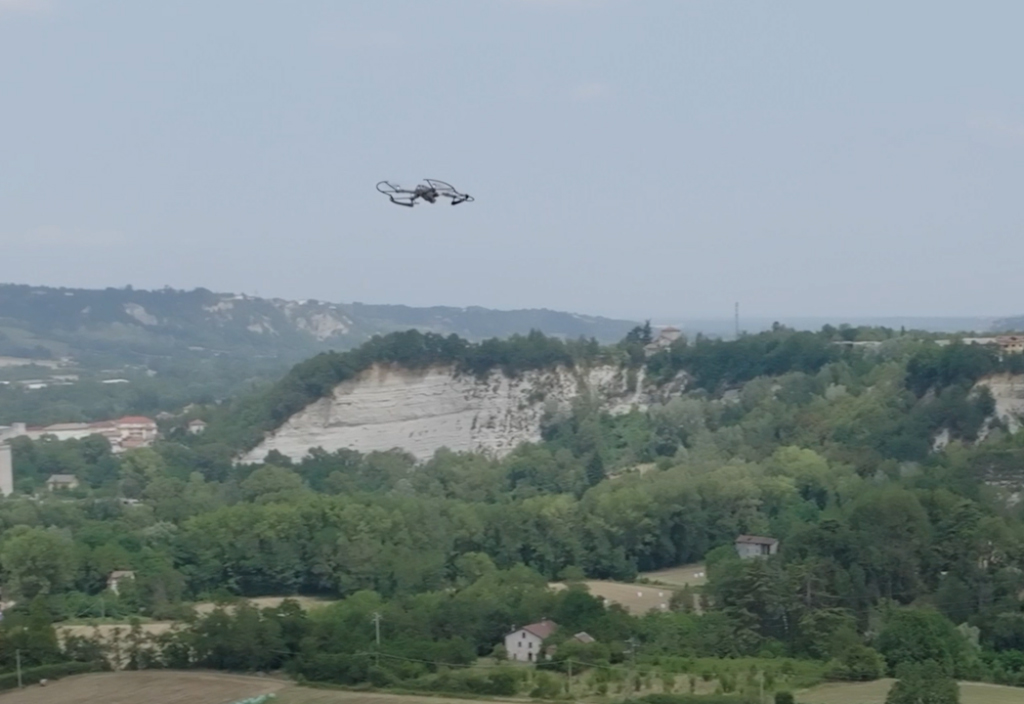ASPI’s CEO Tomasi: ‘This system sets us at the forefront of technological innovation worldwide’
Drones to monitor and support Autostrade per l’Italia’s traffic teams, providing a new technology to support drivers: ASPI’s Falco pilot programme, which has now reached its second phase, is working towards this goal, and more.
Drones can now be remotely operated and managed directly from the traffic control centre in Genoa. The second phase of the Falco project is currently being conducted on the A26 from the A10 junction to Ovada, and on the A10 between Cogoleto and Varazze, through which ASPI can monitor traffic on the motorways from above, even where no cameras are installed. This initiative was launched in partnership with Movyon, the Group’s research and innovation centre.
It was developed in coordination with ENAC, the Italian Civil Aviation Authority, one of the most advanced authorities in Europe in the field of unmanned aircraft, which has issued the operational licence to operate drones in BVLOS (Beyond Visual Line Of Sight) mode on five sites of the Ligurian section of the motorway network. These sections were chosen due to their particular characteristics, as they cross a complex territory from an orographic perspective. Traffic monitoring using an innovative drone service is an effective tool for identifying critical situations and keeping travellers updated on traffic conditions. The project is part of the wide-ranging plan of initiatives implemented by ASPI to facilitate flows.
How the ‘drones’ (Falchi) fly. In the relevant areas, ‘nests’ have been installed to house and enable the drones to take off and recharge, so that they can fly over the assigned stretch. At this second stage, the drones are remotely operated, with missions triggered directly by the relevant traffic control centre, in order to return video streams on road and infrastructure conditions. Flight missions can be planned or activated on demand during specific events (traffic jams, fires, missing materials). Accurate safety protocol is followed. The view from above also makes it possible to monitor road signs, construction sites, the state of the pavement and green areas. All of this information is useful for promptly activating police and rescue teams in case of need and for identifying intervention or repair activities on the infrastructure.
First data and perspectives. Once this second pilot phase is over, data will be collected and analysed for the development of artificial intelligence for event detection, i.e. the automatic recognition of a critical event (such as a stationary vehicle, accident, etc.). In the future, the drone monitoring system could be part of the routine patrolling of the network, helping technicians to detect potential issues, speeding up intervention times and improving service quality. The Falco project is part of the much larger Mercury Programme. Smart Sustainable Mobility, a unified and coordinated hub for technological innovation to achieve increasingly safe, digitised and environmentally friendly motorway infrastructures.
‘With the Falco Project we are testing the use of drones to monitor traffic in real time,’ explained Roberto Tomasi, Chief Executive Officer of Autostrade per l’Italia, ’so that we can better manage traffic flows, increasing safety for users. This system will also be used for inspections on bridges and viaducts, setting us at the forefront of technological innovation worldwide. The ultimate goal is to create a digitised and automated network that provides an ever-increasing amount of timely and immediate information to users and operators. Motorways,’ he adds, ’are and will remain for many years the backbone of the country and its economy. With this in mind, and bearing in mind that innovation is a condition for any development, the Group works relentlessly every day to ensure that the network makes the technological leap needed to accompany the transition to the mobility of the future, in the name of safety and sustainability’.
THE NUMBERS OF THE SECOND PHASE OF FALCO (August 23 to July 24)
Flights planned
- 1407 missions planned, with a success rate of 82% (success = missions actually started and completed). Out of the 18% non-started missions out of the total planned, 70% were due to bad weather
- 191 flight hours with 2837 km flown
Flights on call
- 53 missions on call
- 12.5 flight hours with 84 km flown
Evidence
- 11% increase in detected events
- 50% decrease in intervention times
